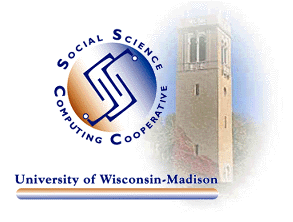
Command AntiVirus (F-PROT) Problems on Windows NT
Address Change for Connecting to UNIX Disk Shares
Newer Dell Notebooks May Have Memory Problems
Problems Printing PDF Files 2up to 4411 Printers
Accessing Your SSCC Network Drives from Home
The problem is caused by bugs in the auto-update feature of Command AntiVirus on Windows NT only. Auto-update is the process of automatically downloading the latest virus definition files. It is an extremely important part of the effort to maintain the highest level of protection against computer viruses. In the latest version of Command AntiVirus for NT (version 4.58.3) the problem is less severe than in earlier versions. Nevertheless, a "blue screen" crash may occur as a result of the auto-update process. The definition files do get downloaded properly, however, and a simple reboot seems to bring the system back up normally.
This bug seems to affect systems randomly and it may or may not occur with each definition update. The Command AntiVirus people are well aware of the problem and are reportedly working hard on a solution. Auto-update occurs, when necessary, either when a user logs onto the network or in the early morning hours if a machine is left on. In either case, you can try a simple reboot yourself to get back up and running, but PLEASE report any "blue screen" crash event to Consultant even if you feel you are back to normal after a reboot.
When a less troublesome version of Command AntiVirus for NT is available, you will get it automatically by the same auto-update process. As far as anybody knows, auto-updating the software version (as opposed to virus definitions) has never caused systems to crash!
The new address is \\sscunix\sharename. For example, for user mcdermot to connect to her UNIX home directory, she would enter \\sscunix\mcdermot in the dialog box that appears when you choose Map Network Drive from the Tools menu of Explorer.
You should also disconnect any mapped drives to the old address. Go to Explorer and choose Disconnect Network Drive from the Tools menu. Highlight the network drive containing \\norman in the path name and then click OK.
For detailed instructions on connecting to disk shares from Windows 95/98, refer to SSCC Pub. #5-8. NT users should refer to SSCC Pub. #5-11.
Dell feels that the problem is due to some bad RAM memory modules. They have developed a program that will test the memory in your Dell notebook, and tell you if it is from the bad batch. If your computer does not fit the description, you do not need to run this test. If it does, you should check, even if you have not had any problems.
The file can be found at Dell's web site. This file should be copied onto your hard drive, and then run. Have a blank, formatted floppy disk ready when you run the program. When you start your computer with that floppy disk in the disk drive, the testing program will automatically run, and tell you if you have potentially bad memory modules. If not, you have nothing to worry about. If the program indicates that you do have bad memory modules, there are instructions for what to do. Dell is willing to replace any bad memory modules that are found.
Meanwhile, NT users can print PDF files 2up to the three HP LaserJet 5Ms in the 2470 public terminal room (queue SSCC2470). (The DEC 17/600s in the 7413 Terminal Room does not allow 2-up printing for NT users.) Windows 95/98 users will not be able to print PDF files 2up on any of SSCC's public printers until HP provides a fix.
Go to previous editions of
SSCC News .
Go to the SSCC Home Page.
© 2000 University of Wisconsin Social Science Computing Cooperative